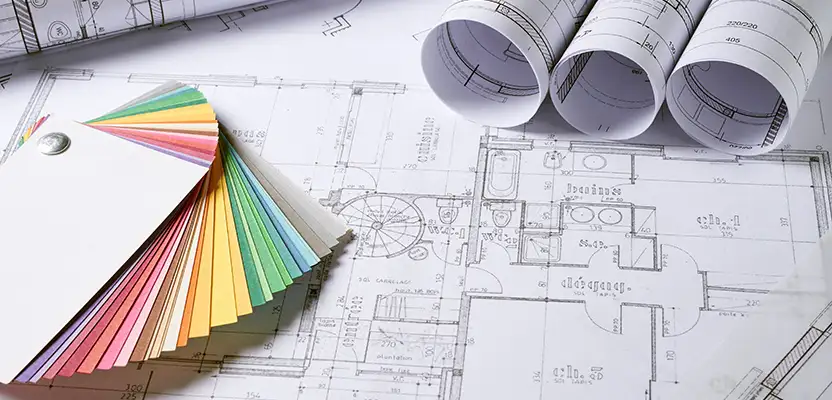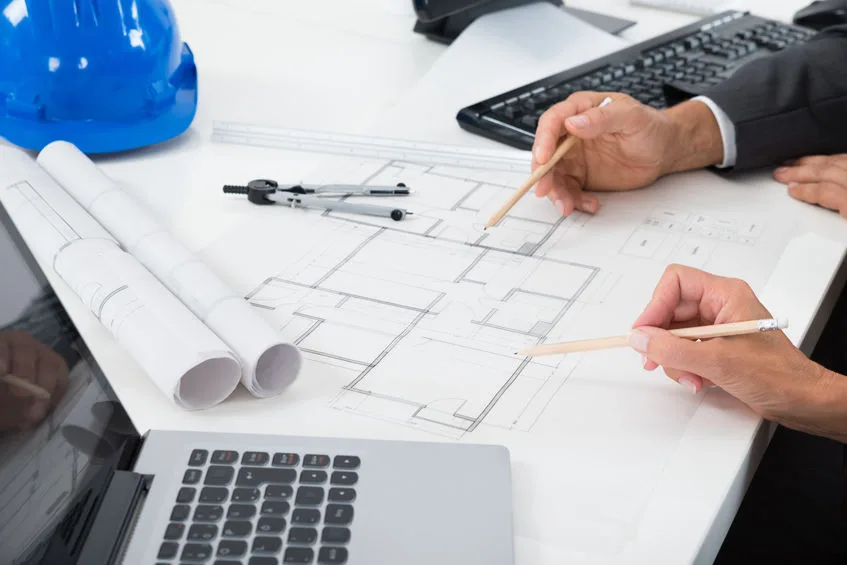Architect Recommended Tools for 3D Modeling
Wiki Article
Comprehending the Diverse Occupation Paths Available for Aspiring Architect
As an aspiring Architect, you have a globe of occupation courses waiting for you. Whether you're attracted to typical style or the nuances of lasting style, there's a niche that aligns with your interests.Typical Architecture: Creating Structures and Frameworks
Conventional design concentrates on designing buildings and structures that mix capability with visual charm. As you explore this field, you'll appreciate the intricate equilibrium in between form and objective. You'll learn to draw inspiration from historic designs, incorporating aspects like symmetry, materials, and craftsmanship. Your designs can reflect social heritage, showcasing local traditions while meeting contemporary needs.You'll establish skills in drafting, model-making, and site analysis, allowing you to envision and communicate your ideas successfully. Involving with clients, you'll need to understand their vision and equate it right into practical styles.
Moreover, constructing codes and sustainability practices are crucial in your job, guaranteeing your structures are eco pleasant and risk-free. As you expand in your occupation, you'll find possibilities in household, industrial, or even reconstruction jobs, each offering distinct difficulties. Accepting standard design leads the way for a satisfying occupation that admires the past while forming the future.
Urban Planning: Forming Communities and Public Spaces
As an aspiring Architect, you can play an important duty as an urban organizer, transforming how communities engage and operate. By employing area engagement techniques, you'll guarantee that residents have a voice in forming their atmosphere. And also, integrating lasting design principles will certainly assist develop areas that not only meet today's demands yet also shield the future.Function of Urban Planners
While numerous might assume of designers as the single enthusiasts behind structures, city coordinators play a necessary role in shaping the broader landscape of communities and public spaces. By working together with various stakeholders, you'll help develop parks, transportation systems, and property areas that advertise social interaction and availability. Your knowledge in spatial style and area dynamics allows you to visualize future growth while maintaining cultural heritage.Community Involvement Techniques
Efficient neighborhood interaction techniques are essential for city organizers to assure that the voices of homeowners are listened to and valued in the preparation procedure. To foster purposeful dialogue, you should prioritize open online forums and workshops where area members can share their ideas and worries. By proactively listening and including comments, you'll develop rooms that reflect the neighborhood's requirements, inevitably leading to even more effective and sustainable urban atmospheres.Lasting Style Concepts
When designing urban spaces, integrating sustainable design principles is important for producing settings that prosper both ecologically and socially. You ought to begin by concentrating on power effectiveness, making use of products that decrease waste and promote recycling. Consider integrating green rooms, like yards and parks, to improve biodiversity and improve air top quality. Promoting walkability and public transport can minimize dependence on autos, fostering a healthier area.Creating with water conservation in mind is likewise key-- consider rain gardens and absorptive surface areas to manage stormwater. Entailing area participants during the planning procedure guarantees that the rooms you create fulfill their demands and urge social interaction. By accepting these concepts, you'll contribute to vivid, lasting city landscapes that profit everybody.

Landscape Architecture: Producing Sustainable Exterior Settings
As you explore landscape style, you'll discover crucial design concepts that develop gorgeous and practical exterior rooms. Lasting methods play an essential duty in guaranteeing these settings thrive while reducing environmental influence. And also, you'll discover a range of job chances that enable you to make an actual distinction in just how people interact with nature.Layout Concepts in Landscape
Understanding design principles in landscape architecture is essential for creating sustainable outdoor environments that integrate with nature. You'll require to contemplate aspects like range, proportion, and balance to ensure your designs feel natural and welcoming. Integrating native plants not just boosts biodiversity however additionally lowers water usage, making your landscape resilient. Think of the flow of room and exactly how individuals engage with it; paths and seating areas must welcome expedition and leisure. Furthermore, take note of seasonal adjustments, designing with products that enhance the environments year-round (Architect). By prioritizing sustainability and aesthetics, you can create outside rooms that improve the community and promote health. Welcoming these concepts will establish a strong foundation for your career in landscape design.Lasting Practices Review
Sustainable practices in landscape architecture not just concentrate on looks yet also prioritize environmental wellness and resource conservation. You can make rooms that advertise soil wellness, such as practicing and utilizing organic products permaculture principles. Inevitably, these practices guarantee your layouts benefit both individuals and the atmosphere for years to come.Profession Opportunities Exploration
With a solid foundation in sustainable methods, landscape design offers a selection of profession paths that permit you to make a significant effect on the setting. You could function as a landscape designer, developing visually pleasing and functional exterior spaces, or concentrate on environmental remediation, aiding to restore damaged ecosystems. Urban planners often work together with landscape architects to develop eco-friendly rooms in metropolitan settings, boosting city livability. If you're enthusiastic regarding education, think about coming to be a landscape style instructor, motivating future generations. In addition, you might deal with nonprofits concentrated on environmental sustainability or involve in research to introduce brand-new techniques. Each course not just shapes stunning environments but also fosters a healthier earth for future generations.Sustainable Layout: Focusing on Eco-Friendly Practices
As you discover your career in design, welcoming environment-friendly techniques can establish you apart in an affordable area. Lasting layout concentrates on producing buildings that lessen environmental influence while boosting passenger well-being. By integrating sustainable materials, energy-efficient systems, and sustainable building techniques, you'll add to a greener future.Start by getting understanding of environment-friendly certifications like LEED or BREEAM, which can bolster your qualifications. Think about just how all-natural light, air flow, and thermal efficiency can optimize read the full info here design. Collaborate with engineers and environmental specialists to innovate services that decrease waste and conserve resources.
Do not fail to remember the relevance of neighborhood involvement-- appealing local stakeholders can influence styles that harmonize with the atmosphere. As clients significantly focus on sustainability, your expertise in eco-friendly techniques will not just attract projects yet also fulfill your enthusiasm for liable architecture. Accept this important aspect of the profession, and see your occupation prosper.
Historic Conservation: Safeguarding and Restoring Cultural Heritage
While you start on your architectural trip, take into consideration the vital function of historical conservation in preserving our cultural heritage. This field focuses on the security and repair of considerable buildings, sites, and frameworks that inform the stories of our past. By participating in historical conservation, see it here you'll help guard the building legacy that forms area identity.As a historical preservation Architect, you'll assess historical value and analyze the problem of structures. You'll work very closely with preservationists and historians to guarantee authentic reconstruction techniques are utilized. This profession path allows you to mix creativity with study, allowing you to develop services that respect initial materials and craftsmanship.
Your job not just contributes to sustainability by reusing existing buildings but additionally promotes a sense of pride within areas. Accepting this course will certainly aid you become a guardian of background, protecting the stories and looks that improve our lives.
Inside Design: Enhancing Indoor Spaces
Historical conservation and indoor architecture both share a dedication to boosting the developed atmosphere, but they concentrate on different elements. While historic conservation emphasizes preserving a framework's cultural and historic value, indoor style absolutely nos in on optimizing indoor areas for capability and appearances.As a hopeful Architect, you'll find that interior design enables you to blend creative thinking with technical skills. You'll make spaces that not just look good however additionally promote convenience and performance. This field involves understanding exactly how light, color, and products connect within a space, influencing mood and usability.
You'll deal with various jobs, from residential homes to business workplaces, making sure that each environment satisfies the requirements of its residents. By focusing on user experience, you can transform interiors right into useful and inspiring spaces, making a significant influence on exactly how people engage with their surroundings. Accept the possibility to enhance interior environments and form the method people work and live.
Industrial Design: Merging Capability With Visual Appeals
Industrial style plays a necessary duty in creating items that perfectly mix aesthetic appeals with capability, guaranteeing that what you make use of everyday is not only aesthetically enticing but additionally sensible. As a hopeful Architect, you can immerse on your own in this field, focusing on designing everything from furniture to customer electronics. Your work includes recognizing user demands, products, and manufacturing processes, enabling you to create innovative solutions that improve everyday experiences.In industrial style, you'll commonly team up with marketing experts, designers, and suppliers, making certain that your designs are not only stunning yet likewise feasible. This career path provides a dynamic environment where imagination satisfies functionality, making it a fulfilling selection for designers interested in shaping the items of tomorrow.
Regularly Asked Questions
What Educational Certifications Do I Need to Come To Be a Designer?
To end up being an engineer, you'll need a specialist level in architecture, commonly a Bachelor's or Master's. Additionally, you'll need to finish a teaching fellowship and pass the Architect Registration Examination to exercise lawfully.Exist Accreditation Requirements for Various Architectural Occupation Paths?
Yes, there're accreditation requirements for different architectural courses. Architect. You'll need to pass tests, full internships, and occasionally seek specialized training, relying on your chosen emphasis, like landscape style, metropolitan layout, or historic preservationWhat Software Abilities Are Necessary for Engineers Today?

Just How Can I Gain Practical Experience While Researching Style?
You can acquire practical experience by interning at building firms, taking part in style competitors, volunteering for area jobs, or working together with schoolmates on real-world jobs. These chances enhance your abilities and develop beneficial connections in the industry.What Job Opportunities Exist Outside Standard Architecture Firms?
You can explore different task opportunities outside standard architecture companies, like metropolitan planning, indoor style, landscape design, building and construction administration, realty growth, or even roles in sustainability consulting. Each offers special obstacles and incentives.Whether you're attracted to standard style or the subtleties of lasting layout, there's a specific niche that straightens with your passions.When making metropolitan spaces, incorporating sustainable layout concepts is essential for creating environments that thrive both environmentally and socially.As you check out landscape style, you'll find essential style concepts that develop stunning and useful outside rooms.Understanding style principles in landscape style is important for creating lasting outside environments that balance with nature.In commercial style, you'll typically work together with suppliers, engineers, and marketers, ensuring that your layouts are not only attractive yet likewise practical.
Report this wiki page